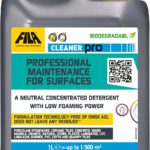Discover the Vital Importance of Backflow Prevention for Ensuring Water Safety
Understanding Backflow: The Risks and Implications You Must Recognise

Backflow is defined as the unwanted reversal of flow within a plumbing system, which creates a serious risk to the integrity of the clean water supply. This issue is particularly significant in densely populated areas such as North Vancouver, where protecting public health and safety is of utmost importance. To effectively implement backflow prevention measures, it is crucial to grasp the various factors that can trigger backflow incidents. Common causes include:
- Backpressure resulting from boilers and similar industrial processes
- Back siphonage arising from sudden drops in water pressure
- Cross-connections between potable (drinkable) and non-potable (non-drinkable) water systems
- Improperly installed or inadequately maintained backflow prevention devices
- Incidents such as water main breaks and hydrant flushing
- Seasonal variations affecting water pressure
- Defective plumbing fixtures, including hose bibs and irrigation systems
- Changes in the elevation of the water supply
Preventing backflow is crucial not only for maintaining water quality but also for complying with local regulations. By taking proactive measures, we can significantly reduce the risks associated with contamination, thereby effectively safeguarding public health and wellbeing.
Understanding the Regulatory Framework for Backflow Testing in Canada
In Canada, backflow prevention and testing are governed by a stringent set of laws designed to protect public health. Local municipalities enforce these regulations, mandating regular testing of backflow prevention devices to ensure they function properly. It is essential for both property owners and business operators to be aware of and comply with these laws. The key regulations in Canada include:
- Provincial and municipal plumbing codes
- Guidelines set forth by local health authorities
- Standards established by the Canadian Standards Association (CSA)
- British Columbia’s Drinking Water Protection Act
- Periodic testing requirements imposed by local utility providers
- Certification standards for all backflow testers
- Penalties for non-compliance with testing schedules
- Documentation and reporting responsibilities for test results
These regulations are designed to protect communities from potential contamination, ensuring that water systems remain safe and reliable for all residents.
The Serious Consequences of Neglecting Backflow Testing
Neglecting to perform regular backflow testing can lead to dire consequences for both public health and property owners. The risks associated with bypassing these tests include severe health issues arising from contaminated drinking water and substantial legal penalties for failing to comply with local regulations. Waterborne diseases such as E. coli and Giardia can proliferate in contaminated systems, posing significant threats to vulnerable groups like children and the elderly.
Furthermore, property owners might face fines and liability lawsuits if backflow incidents occur due to negligence. Staying vigilant about backflow prevention is not just a regulatory obligation; it is a vital responsibility that impacts the safety of the entire community. Regular testing and maintenance can effectively mitigate these risks while demonstrating a commitment to public health and safety.
Expert Insights on Backflow Testing Services in North Vancouver

Determining the Frequency of Backflow Testing
Regular backflow testing is essential for maintaining the integrity of water systems. The frequency of testing typically hinges on the specific type of system installed and the local regulations in effect. For residential properties in North Vancouver, annual testing is commonly mandated to ensure compliance with municipal codes. In contrast, commercial and industrial establishments, which generally feature more complex water systems with elevated risk factors, may require testing every six months or even quarterly.
For instance, a local restaurant with multiple water connections may need to schedule backflow tests more frequently than a single-family home. The primary objective is to identify potential backflow issues before they escalate into a public health crisis. Business owners are encouraged to consult with local authorities to ascertain specific testing intervals tailored to their operations. Consistent monitoring through established schedules is essential for a proactive approach to public health safety.
Recognising the Signs of Backflow Problems
Early detection of backflow issues is critical for preventing contamination and serves as the initial line of defence for property owners. Signs that may indicate backflow problems can manifest in various ways. Property owners should remain vigilant for unusual changes in water pressure, a noticeable decline in flow rates, unexpected discoloration of tap water, or the presence of unpleasant tastes or odours.
Upon noticing any anomalies, the first step should be to inspect for visible leaks or issues with plumbing fixtures. In some cases, property owners may need to consult a certified backflow tester for a thorough assessment. By taking a proactive approach, they can effectively mitigate risks before they develop into serious contamination challenges.
What to Expect During a Backflow Test

A backflow test is a critical procedure that assesses the effectiveness of backflow prevention devices. During this evaluation, a certified technician inspects the valves and pressure within the system to confirm that all components are functioning correctly. This process is typically non-invasive and requires minimal disruption to the property’s water service.
The technician will utilise specialised equipment to measure pressure differentials and verify that backflow prevention devices adequately safeguard the potable water supply. The testing usually lasts between 30 minutes to an hour, depending on the complexity of the system. Following the test, the technician will provide a comprehensive report detailing the findings along with any suggested follow-up actions. This report is vital for maintaining compliance with local regulations and ensuring sustained water safety.
Choosing the Best Backflow Testing Service Provider
Essential Qualifications for a Certified Backflow Tester
Selecting a qualified backflow tester is paramount for ensuring the integrity of your water system. An experienced backflow tester should possess specific certifications and demonstrate extensive expertise in the field. Key qualifications include:
- Certification from recognised organisations such as the American Backflow Prevention Association or relevant local authorities
- Proven experience in backflow testing and installation practices
- A thorough understanding of local regulations and plumbing codes
- Proficiency in using testing equipment and comprehending water system mechanics
- Ability to provide references from previous clients
- Insurance coverage to safeguard against potential liabilities
- A commitment to ongoing education regarding industry best practices and emerging technologies
- Strong communication skills for effectively conveying findings and recommendations
Ensuring that your backflow tester meets these qualifications will enhance your confidence in their capabilities and improve the safety of your water system.
Effectively Evaluating Backflow Testing Companies
When selecting a backflow testing company, conducting a thorough evaluation is crucial. Start by verifying their credentials, including certifications and licenses pertinent to backflow prevention and testing. Customer reviews and testimonials can provide valuable insights into the company's reputation and reliability.
It’s also important to assess the range of services offered. Some companies may provide additional services such as maintenance and repairs, which can be beneficial for ongoing support. During the evaluation process, inquire with potential service providers about their testing methodologies, response times, and customer support policies. A company prioritising transparency and communication is likely to be a more reliable partner in the long run. Taking the time to evaluate these factors will help you select a trustworthy ally for maintaining your water system's integrity.
Financial Considerations for Backflow Testing Services
The cost of backflow testing can vary significantly based on several factors, including the complexity of the water system, geographical location, and the specific service provider. In North Vancouver, residents can expect to pay between CAD 100 to CAD 300 for standard residential backflow testing. More intricate commercial systems may incur higher costs due to the extensive testing and regulatory compliance required.
When budgeting for backflow testing, it is also essential to consider potential repair or upgrade costs that might arise following the testing process. Regular testing serves as a proactive investment that can help avert costly future issues, making it a critical aspect of effective property management. Inquire about bundled services or maintenance contracts that may offer savings compared to individual testing rates. This strategy can facilitate more effective financial planning while ensuring ongoing water safety.
Typical Backflow Testing Scenarios in North Vancouver
The Crucial Role of Backflow Testing in Residential Properties
Backflow testing in residential properties is vital for ensuring the safety of household water. Homeowners must understand the importance of conducting annual testing as a proactive measure to prevent contamination and safeguard families from potential health risks. Many municipalities in North Vancouver require this testing, reflecting a broader commitment to public safety.
For instance, properties equipped with irrigation systems, pools, or hot tubs often face heightened risks of backflow due to cross-connections. These systems necessitate diligent monitoring and testing to prevent contaminants from entering the potable water supply. Homeowners should collaborate with certified professionals to schedule regular testing and stay informed about best practices for maintaining their plumbing systems.
Ensuring Safety Through Backflow Testing in Commercial Buildings
In commercial buildings, backflow testing is not only a regulatory necessity but also critical for protecting the health of employees and customers alike. These buildings typically feature intricate water systems that can pose higher risks for backflow incidents. Regular testing is essential for safeguarding the health of everyone who interacts with the facility.
Numerous businesses, including restaurants, schools, and healthcare facilities, are subject to stricter testing schedules mandated by local health authorities. For example, a restaurant may be required to conduct quarterly tests due to its extensive use of water in food preparation and cleaning. By prioritising regular testing, businesses mitigate the risk of contamination while demonstrating their commitment to public health, which enhances their reputation and operational reliability.
Addressing Unique Backflow Challenges in Industrial Facilities
Industrial facilities face distinct challenges regarding backflow prevention due to their complex operations. These facilities often utilise various water sources and processes, necessitating rigorous safety measures. Regular backflow testing is crucial for maintaining compliance with industry regulations and ensuring water quality.
In North Vancouver, many industrial facilities must adhere to local environmental regulations that dictate testing frequency and standards. Non-compliance can result in significant legal consequences and pose risks to public health. For instance, a manufacturing plant processing chemicals may face stringent guidelines concerning backflow prevention to prevent contaminating the municipal supply. Establishing a robust backflow testing program not only protects the facility's operations but also supports the health and safety of the broader community.
Municipal Water Systems: A Cornerstone of Public Health
Municipal water systems play a pivotal role in delivering safe drinking water to the community, making backflow testing an essential public health measure. Regular testing of backflow prevention devices within these systems is crucial for maintaining overall water quality. In North Vancouver, local authorities frequently conduct these tests to ensure compliance with provincial regulations and protect the public from potential contamination.
Testing protocols for municipal systems typically involve comprehensive assessments of various points within the distribution network. These evaluations help identify any vulnerabilities that could compromise water quality. By proactively managing backflow risks, municipalities can maintain trust and confidence among residents regarding the safety and reliability of their drinking water supply.
Research-Backed Benefits of Backflow Testing Services in North Vancouver
Enhancing Water Quality Through Backflow Testing
Backflow testing is fundamental to maintaining high water quality within both municipal and private water systems. By preventing contamination, these tests help ensure that the drinking water supply remains safe for consumption. Regular testing can significantly lower the risk of waterborne pathogens and pollutants infiltrating the supply.
For instance, a recent initiative in North Vancouver resulted in the implementation of strict backflow testing schedules across both residential and commercial properties. Consequently, instances of contamination decreased dramatically, demonstrating the direct impact of testing on water quality. By preventing backflow incidents, property owners contribute to a healthier community and promote public health, ensuring that both residents and visitors have access to clean and safe water.
The Long-Term Benefits of Regular Backflow Testing
Regular backflow testing provides substantial long-term benefits that extend beyond mere compliance with regulations. By consistently testing and maintaining backflow prevention systems, property owners can ensure ongoing water safety, representing a long-term investment in public health. Furthermore, remaining compliant with local regulations helps avoid fines and legal complications stemming from neglecting maintenance or testing schedules.
To maintain an effective testing schedule, property owners should create a calendar that aligns with regulatory requirements and the specific needs of their systems. This proactive approach fosters a culture of safety and diligence, encouraging community-wide participation in water quality initiatives. Ultimately, the long-term benefits of regular testing lead to improved public health outcomes and reduced risks associated with contaminated water supplies.
Understanding the Impact of Backflow Testing on Public Health
Backflow testing plays a vital role in safeguarding public health by preventing the spread of waterborne diseases. By ensuring that backflow prevention devices operate correctly, communities can significantly lower the risk of contamination in drinking water supplies. This issue is particularly pertinent in urban areas like North Vancouver, where larger populations increase the potential for health crises linked to contaminated water.
Public health initiatives increasingly emphasise the importance of backflow testing as a preventive measure against diseases such as cholera and hepatitis A. Communities that prioritise regular testing not only protect their residents but also support broader public health efforts. Ultimately, the effects of effective backflow testing resonate throughout the community, creating a healthier environment for everyone.
Essential Preparations for a Backflow Test
Key Preparations to Undertake Before a Backflow Test
Preparation for a backflow test is crucial for streamlining the process and ensuring accurate results. Property owners should take several key steps before the scheduled test. First, ensure that the testing agency has clear access to all relevant components of the system, including backflow prevention devices and associated plumbing. This may involve unlocking gates or clearing pathways to facilitate access.
Additionally, reviewing past testing records can offer valuable context for the tester, assisting them in identifying any recurring issues or specific areas of concern. Property owners should also inform all relevant stakeholders, such as tenants or employees, about the upcoming testing to minimise disruptions. Proper preparation leads to a more efficient testing process and fosters clearer communication between property owners and testing professionals.
Providing Essential Information to the Backflow Tester
Providing accurate and comprehensive information to the backflow tester is crucial for ensuring a thorough evaluation of the water system. Essential documents to share include detailed diagrams of the plumbing system, previous test results, and a list of any known issues or concerns regarding the water supply. This information enables the tester to understand the nuances of the system and tailor their approach accordingly.
Moreover, property owners should be ready to discuss any modifications or repairs conducted since the last test, as these changes can affect the testing process. Thorough communication fosters collaboration between the tester and property owner, resulting in more accurate assessments and effective solutions for any identified issues.
Managing Backflow Test Results Effectively
Understanding backflow test results is critical for property owners to take appropriate action based on the findings. If the test results indicate that the backflow prevention device is functioning correctly, property owners should maintain regular testing schedules to ensure ongoing compliance. Conversely, if issues arise, it is essential to address them promptly to prevent potential contamination.
Property owners should work closely with the testing agency to determine the necessary corrective actions. This may involve repairs, upgrades, or even the installation of new backflow prevention devices. Keeping detailed records of test results and subsequent actions taken is crucial for compliance and can assist in future testing endeavours.
Scheduling a Backflow Test: Essential Steps to Follow
Scheduling a backflow test involves coordinating with a certified testing agency and selecting a convenient time for the assessment. Property owners should start by researching local testing companies and verifying their certifications and credentials. Once a suitable provider is identified, it is essential to contact them to discuss availability and specific requirements.
When arranging the schedule, consider factors such as the optimal time to minimise disruptions to daily operations and whether any specific preparations are necessary. Confirming the appointment in advance and ensuring that all parties involved are aware of the scheduled test will facilitate a smoother process and contribute to effective water system management.
Post-Test Maintenance and Follow-Up Care for Backflow Testing
Essential Maintenance Required After a Backflow Test
Post-test maintenance is crucial for ensuring the long-term functionality of backflow prevention devices. If the testing reveals any issues, property owners should prioritise repairs or replacements as directed by the testing agency. Regular inspections and maintenance checks can help address wear and tear before they lead to significant failures.
In addition to immediate repairs, property owners should establish a routine maintenance schedule to keep backflow prevention devices in optimal condition. This can involve periodic visual inspections, checking for leaks, and ensuring that devices remain accessible for future testing. By maintaining diligence in post-test maintenance, property owners can promote ongoing water safety and compliance.
Arranging Follow-Up Backflow Tests: Key Considerations
Scheduling follow-up backflow tests is vital for maintaining compliance and ensuring ongoing water quality. After the initial test, the testing agency typically provides recommendations for the frequency of subsequent tests based on the system’s condition and any issues detected. Property owners should note any specific timelines suggested and work to incorporate them into their maintenance calendar.
When arranging follow-up tests, it is beneficial to book them in advance, especially during busy seasons. This proactive approach helps ensure that compliance is maintained and that water safety continues to be a priority for property owners. Keeping a record of past tests and their results can also assist in planning future evaluations.
What to Do If Backflow Issues Are Detected
If backflow issues are identified during testing, immediate action is crucial to prevent contamination of the water supply. Property owners should first consult with the testing agency to understand the extent of the issues and the recommended corrective measures. This may include repairing or replacing faulty backflow prevention devices or addressing cross-connections in the plumbing system.
In certain situations, it may be necessary to conduct additional tests to assess the overall health of the water system after repairs are made. Being proactive in addressing backflow issues is essential not only for compliance but also for protecting public health and safety. By acting quickly and following expert recommendations, property owners can mitigate risks and ensure that their water supply remains safe.
Determining the Frequency of Backflow Maintenance
The frequency of backflow maintenance largely depends on local regulations and the specific water system in place. In most cases, annual maintenance is recommended to ensure that backflow prevention devices remain in optimal working condition. However, properties with heightened risks of backflow incidents, such as those with irrigation systems or industrial processes, may require more frequent checks.
Consulting with local authorities or a certified backflow tester can clarify the appropriate maintenance schedule tailored to a property’s specific needs. By adhering to recommended maintenance intervals, property owners can ensure ongoing compliance and protect against potential contamination risks, ultimately enhancing the safety of their water systems.
Maintaining Comprehensive Records for Backflow Testing and Maintenance
Maintaining detailed records of all backflow testing and maintenance activities is essential for compliance and effective water system management. Property owners should keep documentation that includes test results, maintenance logs, and any correspondence with testing agencies. This information is vital for demonstrating compliance with local regulations and can assist in future inspections or audits.
Additionally, having a comprehensive record of past tests and maintenance actions helps property owners identify patterns and address recurring issues within their water systems. Organising this documentation in an easily accessible format ensures that it can be readily referenced when needed, contributing to effective water system management and compliance with public health standards.
Strategic Approaches to Implementing Backflow Testing Services in North Vancouver
Creating Effective Backflow Testing Programs for Businesses
Businesses can establish effective backflow testing programs by integrating regular testing schedules into their operational practices. Collaboration with certified professionals is essential for developing a robust program that addresses the specific risks associated with the business’s water systems. By conducting periodic assessments, businesses can ensure that their backflow prevention devices function effectively and comply with local regulations.
For instance, a local hotel may implement a quarterly testing schedule to manage its complex water systems, which include pools, kitchens, and guest bathrooms. This proactive approach not only ensures regulatory compliance but also enhances the overall safety and satisfaction of guests. By prioritising backflow testing, businesses demonstrate their commitment to public health and protect their operations from potential liabilities.
Best Practices for Implementing Backflow Testing
Implementing best practices for backflow testing can significantly enhance the effectiveness of programs aimed at preventing contamination. Best practices include:
- Hiring certified and experienced backflow testers
- Maintaining comprehensive records of all tests and maintenance activities
- Adhering to local regulations and guidelines regarding testing frequency
- Conducting regular inspections of backflow prevention devices
- Providing ongoing training for staff on backflow prevention measures
- Establishing clear communication with local authorities regarding compliance
- Utilising technology to schedule tests and track maintenance
- Engaging with the community to raise awareness about backflow issues
By following these best practices, property owners can not only comply with regulations but also foster a culture of safety and diligence in water system management.
Enhancing Public Awareness About Backflow Testing
Educating the public about backflow testing is essential for fostering community awareness and engagement in public health initiatives. Clear communication regarding the importance of backflow prevention can significantly enhance community participation. Public campaigns may involve distributing informational materials, hosting workshops, and participating in community events to raise awareness of the risks associated with backflow.
Collaboration with local authorities and health organisations can amplify these efforts, ensuring that accurate information reaches a broader audience. Providing easy-to-understand resources, such as pamphlets or online guides, can help property owners recognise the importance of regular testing and maintenance. By promoting education on these issues, communities can work together to improve public health and safety.
Case Studies Showcasing Successful Backflow Testing Initiatives
Success Stories of Backflow Testing in Residential Properties in North Vancouver
Case studies highlighting successful backflow testing in residential properties underscore the importance of regular testing for household safety. In one notable instance, a family in North Vancouver experienced recurring issues with water discoloration and unusual pressure fluctuations. After conducting a backflow test, they discovered a malfunctioning valve that allowed contaminants to infiltrate their drinking water supply.
Following the testing, the property owner promptly replaced the faulty valve and scheduled regular follow-up tests. As a result, the family reported significant improvements in their water quality, illustrating the impact that proactive backflow management can have on household safety. This case emphasises the necessity of regular testing as a preventive measure against potential health risks.
Business Success Stories Arising from Regular Backflow Testing in North Vancouver
Businesses in North Vancouver have realised substantial benefits from regular backflow testing, ensuring the safety of their water systems and adherence to health regulations. A local café implemented a comprehensive backflow testing programme after encountering minor contamination issues. By scheduling quarterly tests and collaborating with certified professionals, the café not only resolved immediate problems but also cultivated a culture of safety within the establishment.
As a result, customers reported increased confidence in the café’s food and beverage quality, leading to improved business performance. This success story illustrates how regular testing not only protects health but also enhances customer satisfaction and loyalty, ultimately contributing to the business’s long-term success.
The Community Impact of Backflow Testing Initiatives in North Vancouver
Community-wide backflow testing initiatives have had a remarkable positive impact on public health and water quality. In North Vancouver, a collaborative effort between local authorities and community organisations led to comprehensive backflow testing across residential and commercial properties. This programme aimed to raise awareness and encourage proactive management of water systems.
As a result of these collaborative efforts, instances of contamination decreased, and residents reported improved water quality. By fostering a sense of collective responsibility, the community demonstrated the importance of regular backflow testing and maintenance. This cooperative approach serves as a model for other communities seeking to enhance public health and protect their water supplies.
Your Comprehensive Questions Addressed: Backflow Testing FAQs
What is the purpose of backflow testing, and why is it critical for water safety?
Backflow testing is a procedure that assesses the effectiveness of backflow prevention devices in plumbing systems, ensuring that contaminants do not enter the potable water supply.
How often should backflow testing be conducted to comply with regulations?
In North Vancouver, residential properties generally necessitate backflow testing annually, while commercial and industrial systems may require testing every six months to quarterly, depending on local regulations.
What actions should I take if my backflow test fails?
If your backflow test fails, it is crucial to promptly address the issues. Consult with a certified backflow tester to determine necessary repairs or replacements to ensure the safety of your water supply.
How can I locate a certified backflow tester in my area?
You can find certified backflow testers by searching local directories, checking with municipal water authorities, or seeking recommendations from other property owners in your vicinity.
Are there penalties for failing to conduct required backflow testing?
Yes, neglecting to perform mandated backflow testing can result in fines, legal penalties, and potential liability for health-related issues stemming from contaminated water.
Is it possible for me to conduct backflow testing myself?
Backflow testing should only be carried out by certified professionals equipped with the necessary training and tools to perform the test accurately and in compliance with regulations.
What occurs during a backflow test?
During a backflow test, a certified technician evaluates the backflow prevention devices, checking for proper functionality and potential leaks to ensure contaminants do not infiltrate the drinking water supply.
How should I prepare for a backflow test to ensure accuracy?
To prepare, ensure that access to the plumbing system is clear, gather past testing records, and inform any relevant parties about the scheduled test to minimise disruptions.
What maintenance is required following a backflow test?
Post-test maintenance may involve addressing identified issues, conducting routine inspections, and scheduling follow-up tests to ensure the ongoing functionality of backflow prevention devices.
Why is backflow testing essential for maintaining public health?
Backflow testing is vital for public health because it helps prevent contamination of the drinking water supply, thereby reducing the risk of waterborne diseases and safeguarding community health.
Connect with us on Facebook!
The Article: Backflow Testing Services in North Vancouver: Ensuring Water Safety First Published On: https://pacificbluemechanical.ca/
https://pacificbluemechanical.ca/backflow-testing-services-in-north-vancouver-ensuring-water-safety/
The Article: Backflow Testing Services: Ensuring Water Safety in North Vancouver first appeared on https://writebuff.com
The Article Backflow Testing Services for Safe Water in North Vancouver Was Found On https://limitsofstrategy.com

